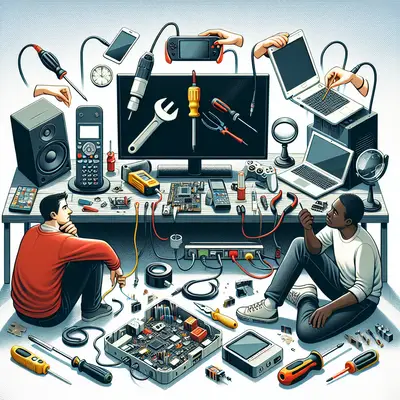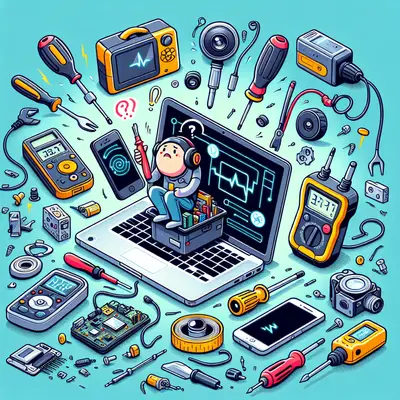With the rapid pace of technological advancement, our reliance on electronics has never been greater. Yet, these devices don't always cooperate the way we'd like. Whether it's a glitching laptop or a temperamental smartphone, electronic issues can disrupt our daily routines and workflows. However, not all problems require professional intervention. Here are five under-explored techniques that can help you maintain your electronics in top-notch condition in 2025.
The Magic of Rice
Believe it or not, uncooked rice can potentially save your water-soaked device. If you accidentally drop your electronic gadget in water, switch it off immediately, take out the battery if possible, and immerse it in a bag of uncooked rice. The rice will absorb the moisture, and with a bit of luck, your device could be up and running again in 24-48 hours.
Embrace the Power of Compressed Air
Dust and debris can often cause your electronic devices to overheat or malfunction. Use a can of compressed air to gently remove dust from the vents, keyboard, or other open areas of your device. Remember to hold the can upright to prevent the liquid propellant from causing damage.
The Toothpaste Trick
Scratches on your device screen can be frustrating and can impair visibility. However, a non-gel toothpaste can come to the rescue. Apply a small amount of toothpaste to a soft cloth, and gently rub it on the scratch. Wipe off the excess toothpaste with a slightly damp cloth, and you may just find your screen looking as good as new.
Baking Soda: The Unsung Hero
Corrosion on battery terminals can hinder the performance of your device. A simple paste made of two parts baking soda and one part water can help clean the corrosion effectively. Apply the paste with a cotton swab, let it sit for a few minutes, then wipe clean. Make sure the device is off and the batteries are removed before you start.
The Freezer Fix
If your hard drive crashes, there's one last-ditch attempt you can make before seeking professional help. Place your hard drive in a sealed plastic bag and put it in the freezer for about 12 hours. Sometimes, the change in temperature can help revive a failing hard drive. However, this should be your last resort, and remember to back up your data if it starts working.
Conclusion
While professional help may be required for more complex electronic problems, these simple and lesser-known DIY techniques can often solve common issues. By adopting these strategies, you can extend the life of your valuable electronics and continue to enjoy their benefits in 2025 and beyond.



